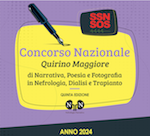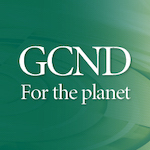Content type
Editorials | Reviews | Original research articles | Point of views | Short communications | Case reports | Correspondence | Video articles | Image explained
AIRP article | ANED article | SIAN article
Giornale di Clinica Nefrologica e Dialisi endorses the EQUATOR Network initiative, which promotes the transparent and accurate reporting of health research. Authors are required to identify the relevant reporting checklist for their study type and ensure that it is completed and submitted along with their manuscript. Adhering to these guidelines enhances the quality and clarity of research reporting, ultimately contributing to the advancement of scientific knowledge.
Editorials (invited only)
The purpose of the editorials is to provide the reader with a balanced overview of relevant and up to date topics, often reflecting the opinion of the Journal. No abstract is required.
Words: max 3000 (excluding figures, tables and references) | Figures/Tables: max 4 | References: 30
Reviews
Reviews are intended to focus on the current state of knowledge or practice, integrating recent advances with accepted principles and practice, or summarizing and analyzing consensus view of controversial issues in knowledge of practice. A non-structured abstract is required (max 250 words).
Words: max 3000 (excluding excluding figures, tables and references) | Figures/Tables: max 4 | References: 30
Original research articles
Previously unpublished manuscripts, describing clinical, pre-clinical, epidemiological investigations, clinical trials, clinical observations, and other relevant investigations that are based on sound patient series, validated analytical methods, and appropriate statistical evaluation. Systematic reviews and meta-analysis can also be submitted as an original research article. Original research articles should be structured as follows: Introduction (clearly stating an objective or hypothesis), Methods (describing the study design and methods applied, including the study setting and dates, patients or participants with inclusion and exclusion criteria, and/or participation or response rates, or data sources, and how these were selected for the study), Results (describing the results of the study in context with the published literature and addressing study limitations), and Conclusions (addressing relevant implications for clinical practice or health policy). A structured abstract (max 250 words) is required.
Words: max 3000 (excluding excluding figures, tables and references) | Figures/Tables: max 6 | References: max 50
Point of Views
Points of view are intended to present viewpoints on the interpretation of recent investigations in pertinent research area. Points of view are fully referenced, peer reviewed articles and must offer a clear presentation of the authors’ perspective and a constructive discussion. A non-structured abstract is required (max 250 words).
Words: max 3000 (excluding figures/tables) | Figures/Tables: 4 | References: max 30
Video Articles
A video article provides author(s) with an opportunity to supply their work using visual media. The video article is composed by
a) a title page
b) the video, approximately 8 minutes long and containing all of the elements which are found in a written manuscript. The narration must be in English and should not include background music. Video articles must contain an introduction slide outlining the title and a further slide outlining the abstract (max 250 words). Accepted file formats: MOV (Apple QuickTime Movie) , MPEG4 , AVI (Microsoft Audio Video Interleaved), WMV (Windows Media Video)
c) Images, Graphs, or other materials which support the findings of the article may be included.
d) a thumbnail image which is representative of the content of the video article.
Image explained
Images capture the sense of visual observation physicians experience in their daily practice and are a great tool to convey visible contents. Images should provide advances and/or unusual contributions. This article is composed by
a) a title page, with no abstract
b) an image description ( similar in concept to a figure legend)
b) A text, of no more than 500 words, structured as Discussion and Conclusions, describing the image and the techniques used to capture them, relevant clinical information and no more than 5 references. If appropriate it may include a teaching point that makes clear the clinical relevance of the submission. Videos or additional supplementary materials which support the findings of the article may be included.
Words: max 500 | Figures/Tables: max 1 | References: max 5
Short communications
A concise report of data from original research, focused on initial findings that will be of interest to scientists in other fields. A structured abstract is required (including Background, Aim, Methods, Results, Conclusion, max 250 words)
Words: max 1500 (excluding excluding figures, tables and references) | Figures/Tables: max 3 | References: max 7
Case reports
Case reports will be considered if they describe a previously undescribed clinical case and are of very high importance for dissemination. Case reports must be structured as follows: Introduction (explaining the importance of the case), Case description (describing the case) and Conclusions (describing the detailed outcome of the report). A structured abstract is required (max 250 words).
Words: max 1500 (excluding excluding figures, tables and references) | Figures/Tables: max 3 | References: max 7
Correspondence
Letters to the Editor and letters in reply are intended to present opinions or omments on articles published in the Journal. Letters are subject to abridgement and editing for style and content. A letter in reply must cite the title of the letter, e.g., “Response to (Title of Letter)”. An abstract is not required.
Words: max 500 (excluding excluding figures, tables and references) | Figures/Tables: max 1 | References: 5
AIRP Onlus - In collaboration with Associazione Italiana Rene Policistico
Articles included in this sections report on experiences from patients, caregivers and family members as well as from professional healthcare members dedicated to APDKD, its diagnosis and therapy. Contributions may include reviews and original research articles.
Reviews: Words: max 3000 (excluding excluding figures, tables and references) | Figures/Tables: max 4 | References: 30
Original articles: Words: max 3000 (excluding excluding figures, tables and references) | Figures/Tables: max 6 | References: max 50
Narrative nephrology - In collaboration with Associazione Nazionale Emodializzati (ANED)
Articles included in this sections report on experiences from patients, caregivers, family members and professional healthcare members involved with the care of nephrology patients.
Reviews: Words: max 3000 (excluding excluding figures, tables and references) | Figures/Tables: max 4 | References: 30
Original articles: Words: max 3000 (excluding excluding figures, tables and references) | Figures/Tables: max 6 | References: max 50
Nephrology nursing - In collaboration with Società Infermieri Area Nefrologica (SIAN)
Articles included in this section represent contributions to nursing topics, applied to nephrology, dialysis and transplant.
Reviews: Words: max 3000 (excluding excluding figures, tables and references) | Figures/Tables: max 4 | References: 30
Original articles: Words: max 3000 (excluding excluding figures, tables and references) | Figures/Tables: max 6 | References: max 50







